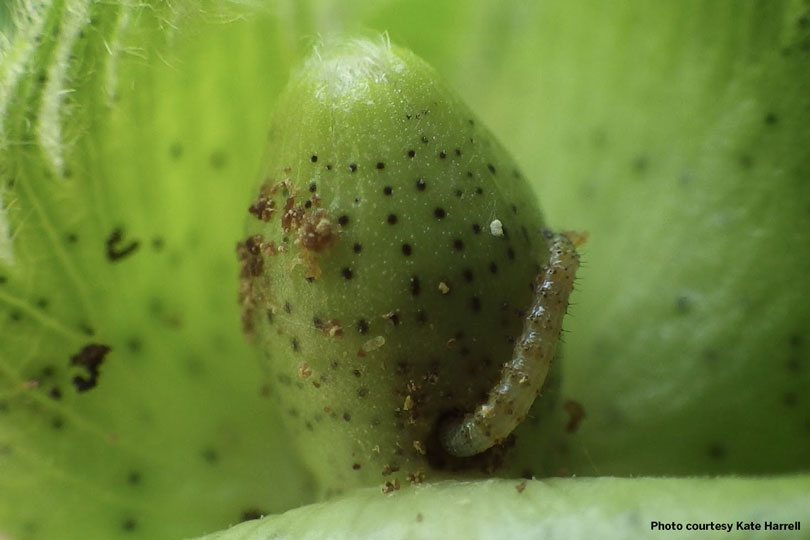By Jessica Domel
Multimedia Reporter
It’s been a wetter-than-normal year for most, spurring resurgences of insects some Texas farmers and ranchers haven’t seen in years.
In Glasscock County in West Texas, the problem is large grasshoppers called lubbers or lubers.
“Generally, they’re moving out of the pastures, primarily on the east side of the county,” Brad Easterling, Texas A&M AgriLife Extension agent-Integrated Pest Management, said in an interview with the Texas Farm Bureau Radio Network. “It’s a steady migration coming out of the pastures into our seedling cotton.”
The lubbers, which don’t have wings and can be two- to three-inches long, will eat weeds and other forage available for cattle.
“I’ve even seen them feed on what’s left of the (cotton) stalk and chew it clear down to the ground,” Easterling said.
Although not a rare occurrence, the concentration of lubbers seen this year doesn’t happen very often.
“It may be once every six to 10 years that we’ll have these grasshoppers move in, especially in these larger numbers, and feed like this,” Easterling said. “It generally seems to be in the drier years, but especially if we have a fairly wet spring, then they’ll have a good hatch from their eggs, and we see these larger populations.”
Landowners can spray the edges of their pastures and field margins down to reduce the number of lubbers.
“The biggest issue we have is that when they’re migrating in these larger numbers, then it’s going to take more than one application to keep the grasshoppers under control,” Easterling said.
In addition to the lubbers in Glasscock County, large numbers of the insects have been seen on U.S. Highway 87 between Big Spring and San Angelo and on State Highway 158 from Glasscock County toward Sterling City.
“We’re seeing large numbers being run over on the road,” Easterling said. “We’re seeing a few spots in Reagan County just south of Glasscock County.”
Easterling said there may be places where people see three or four lubbers coming out of pastures, but it’s nothing like the thousands that have moved into other areas.
In other parts of the state, it’s bollworms that threaten Texas cotton.
Kate Harrell, Texas A&M AgriLife Extension Service agent-Integrated Pest Management for Wharton, Jackson and Matagorda counties, urges farmers to scout their fields when the cotton blooms.
“I recommend doing full plant checks. I know it’s a lot more trouble, but if you look up and down all of the plants, you can tell,” Harrell said. “A lot of the time, they lay eggs on bloom tags and in different places in the plant.”
Bollworms may also lay eggs in the terminal.
“If you’re doing plant terminals at each stop, I’d do 25 plant terminals, and then just look at the whole upper third there checking for caterpillars and eggs,” Harrell said. “Just grab large squares and bolls or blooms to check for bollworm damage on the inside of them.”
The recommended threshold is six percent damage with caterpillars present.
“In plants that do not have the Viptera gene, we are recommending treatment on egg lay,” Harrell said. “If you’re finding 20 percent of plants with eggs on them, then we’re recommending treatment on that.”
Harrell recommended Rynaxypyr technology to treat bollworms. There’s a list of options available on UpperCoastIPM.blogspot.com.
“If you don’t catch them, they can get out of control pretty easily,” Harrell said. “They’ll eat through the fruit and cause fruit drop.”
Over the past few years, bollworms have become increasingly resistant to older biotechnology traits in cotton. They’ve also been found in corn, which is one reason for the bollworm issues in cotton.
“The ones that survive and make it through that selection pressure (in corn) are what’s moving into the cotton,” Harrell said. “Most of the traits that are in the corn are the same ones that are in the cotton, but a lot of times they’re expressed differently in cotton. So, they are actually doing better after they get through the corn and get into the cotton.”

